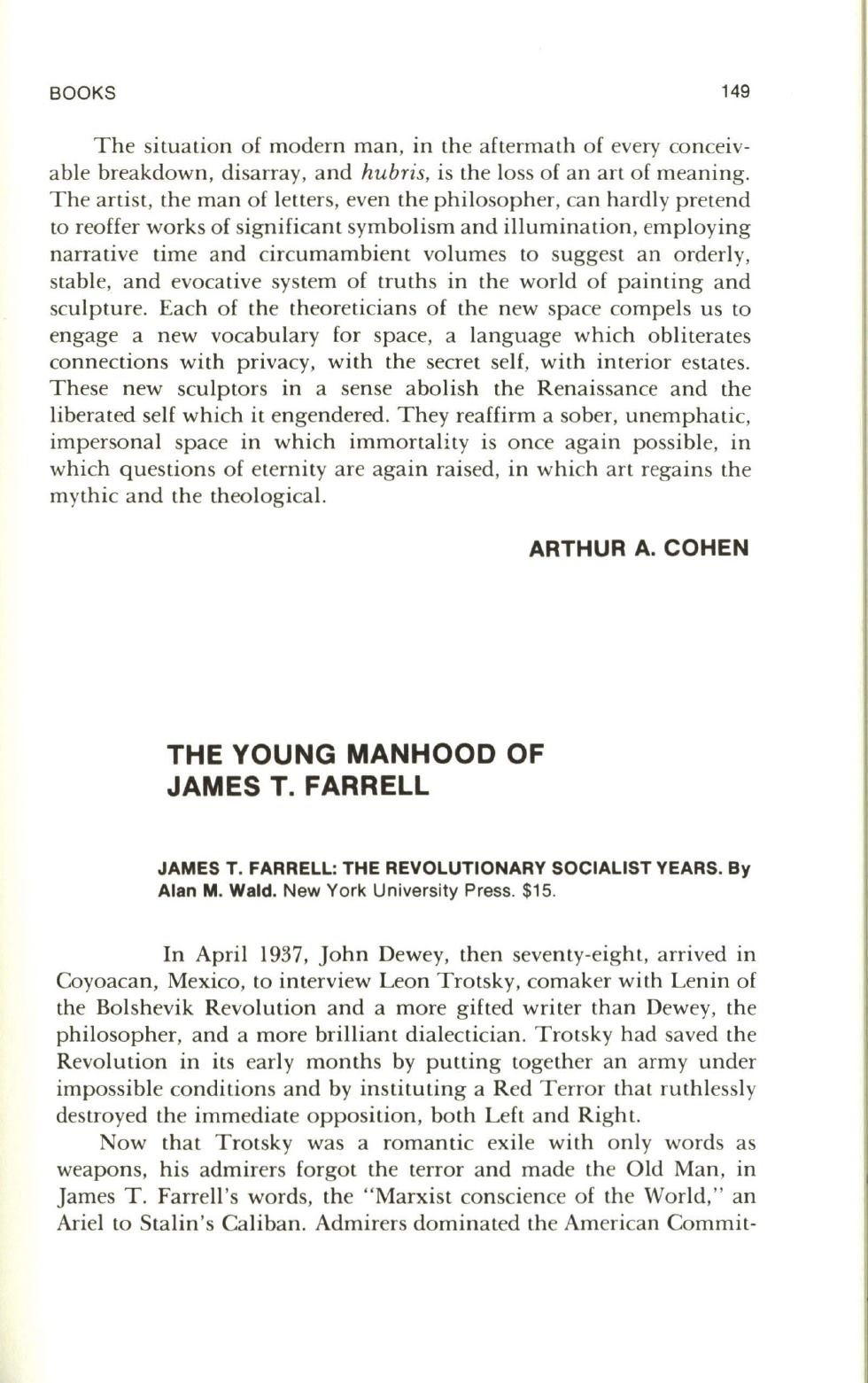
BOOKS
149
The situation of modern man, in the aftermath of every conceiv–
able breakdown, disarray, and
hubris,
is the loss of an art of meaning.
The artist, the man of letters, even the philosopher, can hardly pretend
to
reoffer works of significant symbolism and illumination, employing
narrative time and circumambient volumes to suggest an orderly,
stable, and evocative system of truths in the world of painting and
sculpture. Each of the theoreticians of the new space compels us to
engage a new vocabulary for space, a language which obliterates
connections with privacy, with the secret self, with interior estates.
These new sculptors in a sense abolish the Renaissance and the
liberated self which it engendered. They reaffirm a sober, unemphatic,
impersonal space in which immortality is once again possible, in
which questions of eternity are again raised, in which art regains the
mythic and the theological.
ARTHUR A. COHEN
THE YOUNG MANHOOD OF
JAMES T. FARRELL
JAMES T. FARRELL: THE REVOLUTIONARY SOCIALIST YEARS. By
Alan M. Wald.
New York University Press. $15.
In
April 1937, John Dewey, then seventy-eight, arrived in
Coyoacan, Mexico, to interview Leon Trotsky, comaker with Lenin of
the Bolshevik Revolution and a more gifted writer than Dewey, the
philosopher, and a more brilliant dialectician. Trotsky had saved the
Revolution in its early months by putting together an army under
impossible conditions and by instituting a Red Terror that ruthlessly
destroyed the immediate opposition, both Left and Right.
Now that Trotsky was a romantic exile with only words as
weapons, his admirers forgot the terror and made the Old Man, in
James
T.
Farrell's words, the "Marxist conscience of the World," an
Ariel to Stalin's Caliban. Admirers dominated the American Commit-


